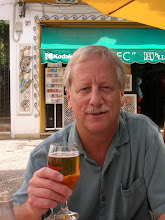I have had guys here cleaning out the ducts and furnaces today, so it is a good excuse for further research, as they are spending most of the day here. Probably the most important discovery today was a new version of The Montgomery Manuscripts on Google, published in 2009 by Bill Montgomery. It has three references to Harper. It notes that the surname Harper is a common trade name. Harps and lyres are common in almost all cultures The oldest one was found in the ruins of ancient Sumer. The first evidence of a Gaelic harp dates back to the first century while the first evidence of a Scottish harp dates back to the 9th century. Apparently, the Scots surpassed the Irish in harp-playing at some point, according to Gerald of Wales. At the time of the Scottish enlightenment (David Hume, Adam Smith, etc.) the harpsichord became very popular. However, this is not a proper harp because the strings are not perpendicular to the soundboard. It is of the zither family, as is the piano.
Two Harpers were granted land in the Ulster Plantation, John Harper of Donaghdie and John Harper of Ballyhay. On May 1, 1613, Sir James Cunningham made a grant of 1000 acres, a portion of which went to John Harper. He was one of six granted a part of the quarter of Magherybegg, in Monagh (alias Ballyghan), in the precinct of Portlagh, baroney of Raphoe, County of Donegal. In 1629, the King of England granted the land back to the son of James Cunningham, also called James, who set up a manor called Fort Cunningham, and had the power to issue tenures. Thus, it appears that this Harper became a tenant farmer.
I discovered that Kilaloo is part of the Limavady area, where the John Harper who emigrated to America was born. Thus, I think that our family history geneology chart is wrong regarding the birthplaces of Mary Aken and Abigail Montgomery. Limivady is the birthplace of the song Londonderry Air, whose mournful tune was recorded as Danny Boy, my favorite old Irish song.
I need to read the book, but also have learned in another on-line book that three Montgomerys emigrated to America at the same time. William and Robert stayed and Hugh returned to Ireland. The original book was written by William Montgomery, grandson of the famous Hugh, who was born in about 1633, and was a very learned fellow.
The earlier reference to Beith, Scotland was borne out. The Montgomerys lived there for many years in the Broadstone Castle, which unfortunately no longer exists, as the area was cleared for a factory during the industrial revolution. Hugh was the 1st Viscount of Montgomery and the sixth Laird of Braidstone. The Montgomerys had a long-running feud with the Cunninghams. Hugh had apparently killed the head Cunningham after he had been insulted by running him through with a sword, but he survived. This feud went back to the 1400's. It will be interesting to see how it manifested itself in the early 1600's in Ireland.
Also, dear sister, the evidence appears strong that you are descended from Queen Isabella. Hope that makes your book even more interesting (she is reading the account by Alison Weir).
Addendum: "...The Scots who made the move to Ulster seem to have been a relatively balanced cross-section of the national population. At the upper end of the scale were small landowners and substantial tenants who saw the venture as an unprecedented opportunity for economic advancement... below this élite class was a broad social spread which included artisans and labourers as well as farm servants and cottars. Significantly for every four men, three women moved to Ulster... this was an important influence which helped to maintain the distinctive identity of the Ulster Scots..."
T.M Devine
Scotland's Empire 1600 - 1815
(London, 2003)
Saturday assorted links
10 hours ago




No comments:
Post a Comment